Early trout plants happening in statewide year-round lakes to give anglers a jump start on spring fishing Leave a reply
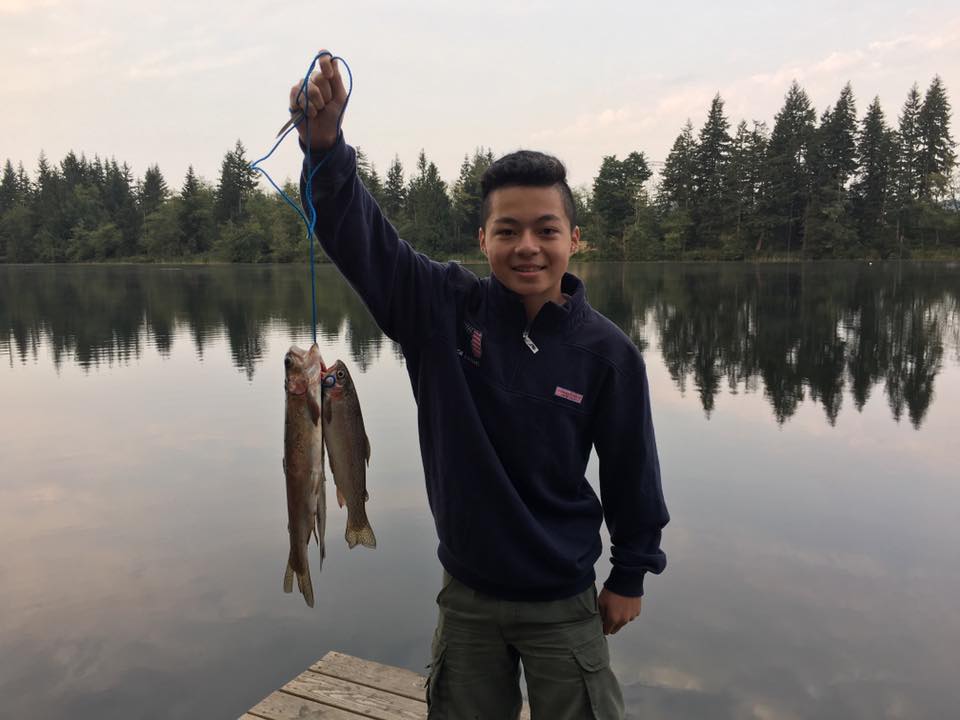
One way to break away from the March Madness that has many on edge is wetting a line for spring trout fishing opportunities.
The Washington Department of Fish and Wildlife (WDFW) will begin planting millions of trout now through late spring although there will be some changes for those looking to get a jump start.
“We’re not going to do as many March trout plant like we’ve done in the past,” said Justin Spinelli, a WDFW Puget Sound regional biologist. “The plan is to divert the majority of the plants late fall plants instead.”
“I keep going back and forth on the early March plants but what we’ve found is there’s not a big push of people fishing for them,” Spinelli said. “We still plan to stock some lakes in March and early April to support the year-round fishermen. Look for core stocking to occur from April to May and we’re also planning on another strong fall plants for winter fisheries.”
“The unusually mild weather this winter has kept trout active in open lakes that we planted last fall and winter,” Spinelli said. “We’ve seen a few fish still caught at lakes like Green and Ballinger, but it’s not hot and just a chance to get out on the water.”
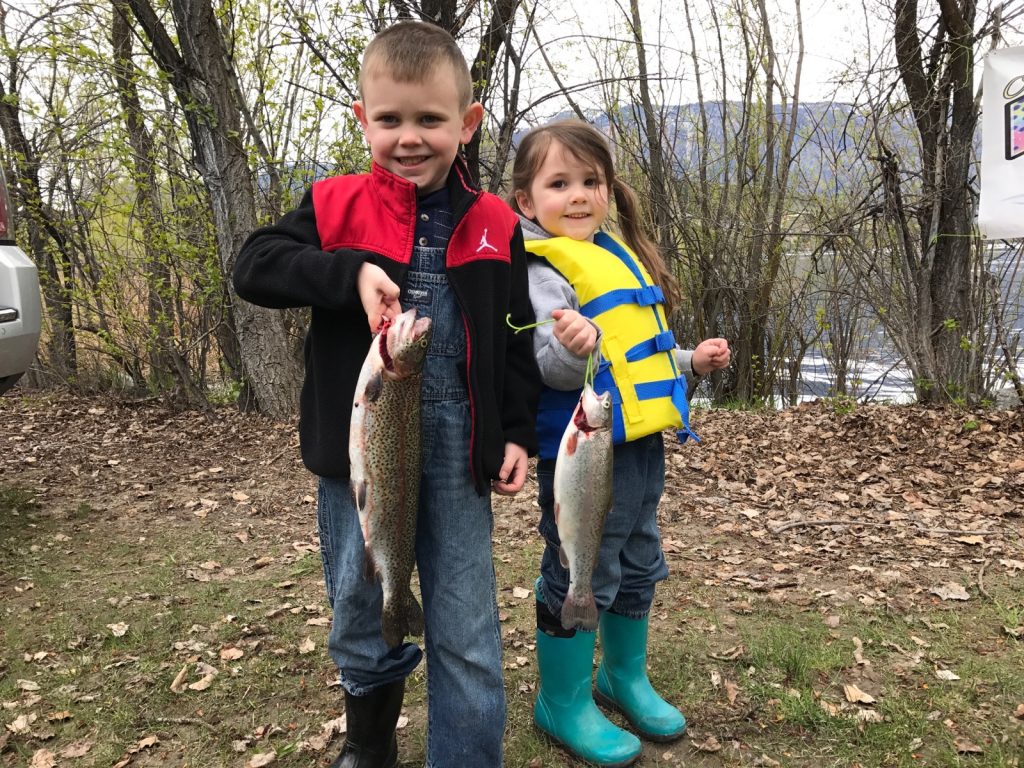
Year-round lakes in Puget Sound region that will be planted March through May are – Island County: Lone, 3,000. King: Green, 11,000; Meridian, 12,000 from March to April; and Rattlesnake, 3,500. San Juan: Egg, 600; and Hummel, 1,000. Skagit: Grandy, 5,600. Snohomish: Cassidy, 3,500; Ketchum, 2,000; Lost, 1,500; and Panther, 1,500. Whatcom: Terrell, 2,000.
Here is a list of other statewide year-round lakes that’ll be planted beginning this month.
Benton County – Columbia Park Pond, 6,000. Columbia – Dayton Pond (youth only). Cowlitz – Horseshoe, 20,461; Kress, 13,711 rainbow and 2,000 brown; Sacajawea, 16,644 rainbow and 2,000 brown; Silver, 9,300. Douglas – Big Bow Pond, 7,000; Hammond Pond, 4,000; Pit Pond (youth only), 4,000; and Putters Pond, 10,000.
Grays Harbor – Duck, 4,700; Sylvia, 4,750; Vance Pond 1 (youth only), 1,800; Vance Pond 2, 2,000; and Swano, 250. Jefferson – Leland, 8,000. Kittitas – FioRito North, 9,000; Morton, 8,400; McCabe, 1,900; and Woodhouse, 600. Kitsap – Island, 2,000. Lewis – South Lewis County Pond, 8,000; and Swofford Pond, 20,000.
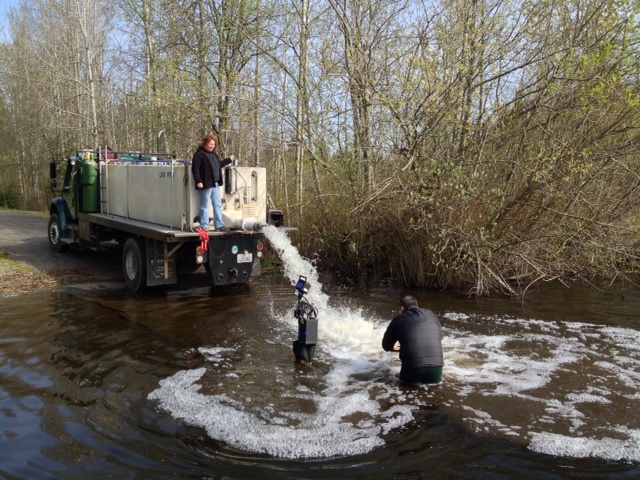
Mason – Lost, 4,900; Tee, 2,700; and Trails End, 3,700. Pacific – Black, 14,100; Snag, 5,200; and Western Pond, 5,200. Pierce – American, 21,200; Bonney, 1,020; Bradley, 5,000; Kapowsin, 31,000; Louise, 1,500; Spanaway, 18,000; Steilacoom, 8,000; and Whitman, 2,000. Spokane – Bear, 1,500; and Liberty, 4,000. Stevens – Deer, 4,000. Thurston – Black, 39,450; Lawrence, 25,000; Long’s Pond, 4,600; and Offutt, 5,000. Walla Walla – Jefferson Park Pond, 3,000. Whitman – Pampa Pond, 6,000; and Riparia Pond, 500. Yakima – Granger Pond, 1,400; I-82 Pond 1, 1,500; I-82 Pond 2, 2,000; I82 Pond 3, 1,000; I-82 Pond 4, 5,650; I-82 Pond 6, 5,150; Myron, 500; Rotary, 7,620; and Sarge Hubbard Park (youth only), 6,600.
For more specific week-to-week trout planting dates in year-round lakes, go to https://wdfw.wa.gov/fishing/plants/weekly/.
The traditional statewide lowland lakes trout opener is April 25-26 with more than 16.3-million trout and kokanee being planted into 553 bodies of water.
Anglers can look forward to trout plants in 2020 on par with 2019 and WDFW hatchery crews will soon be trucking more than 16.5-million trout and kokanee to 546 water bodies across the state.
According to Spinelli, the Puget Sound region projected plant will be close to 436,250 trout, 21,800 jumbo trout (longer than 14 inches and one-pound or larger in weight) and 28,000 “put, grow and take trout” plus more than 5.7-million fingerling planted in 2018.
Several years ago, WDFW came up with a cost-effective way to produce larger catchable-sized trout in hatcheries, which has been a hit according to angler surveys taken from previous openers.
The standardized catchable-sized trout is now 11 inches compared to 8-inches in previous seasons and anglers should find about 2.19 million (2.17 in 2019) of these trout lurking in lowland lakes.
Ocean summer salmon options revealed
The poor Columbia River coho forecasts came to light a few weeks ago and were expected to create issues in setting the salmon fishing seasons this summer, and while closing all ocean fishing is still on the table, it appears there are two alternatives to access healthy hatchery salmon stocks.
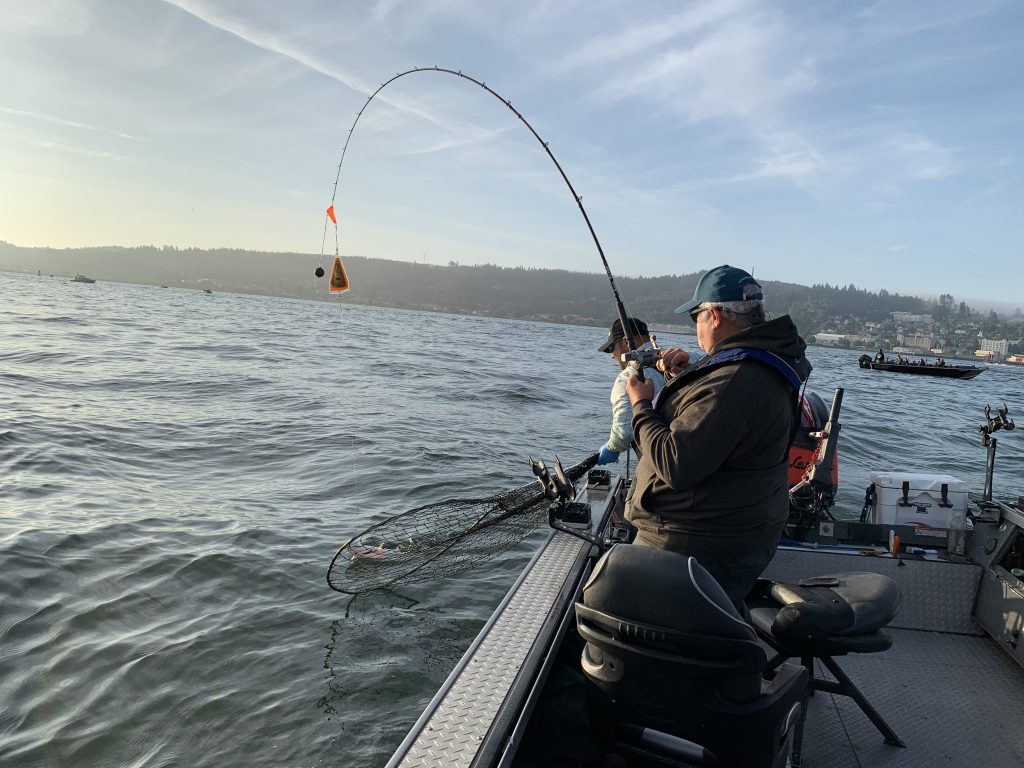
State, tribal and federal fishery managers met this past week in Rohnert Park, Calif., to develop three ocean salmon fishing options, during the Pacific Fishery Management Council (PFMC) meetings.
Off the Washington-Oregon coast, a coho forecast of 268,700 is expected in 2020, compared to a preseason forecast of 1,009,600 last year and an actual return of 408,100 in 2019 (forecast in 2018 was 349,000 and an actual larger return of 230,700).
The Columbia subtotal is 181,000 – coho that turn the corner of southwest Washington near Cape Disappointment and doesn’t include the northern Oregon coast. There is also a small coast subtotal of 4,700 coho forecasted (27,090 forecasted in 2019 and 3,000 was actual return).
Coastal salmon fishery managers are mainly concerned about the poor Columbia River early- and late-timed coho returns in 2020 since they’re the key drivers in ocean sport fisheries.
The Columbia River early coho forecast is 130,700 (545,000 was forecast in 2019 and actual return was 191,400); late coho is 50,300 (360,600 and 106,100); and Oregon coast natural coho is 83,000 (76,100 and 107,600).
The dismal coho forecasts will likely affect ocean fisheries at Neah Bay, La Push, Westport and Ilwaco, but there have been poor returns in the past with fishery managers still crafting somewhat limited summer seasons.
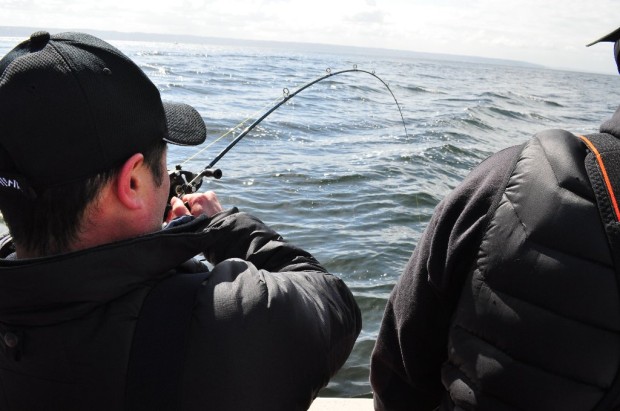
When looking at coho seasons dating back 10 years, this season could land right on the same page as 2010, 2011, 2012 and 2018 when it was down in the dumps. The situation improved in 2013 and was a lot better by 2014 although there wasn’t many coho caught in the ocean fisheries.
Along the Washington coast, the coho return forecast is 276,989 in 2020 (down from 401,655 in 2019 and up slightly from 270,756 in 2018).
Other coastal coho forecasts are Willapa, 69,635 (157,467 in 2019); Grays Harbor, 113,674 (135,872); Queets, 18,716 (24,275); Hoh, 4,159 (6,963); Quinault, 44,434 (40,792); and Quillayute, 22,118 (31,677).
The Columbia River fall chinook return of 430,000 is much better than the forecast of 340,400 and an actual return of 375,700 in 2019 and 365,600 and 290,900 in 2018.
Fishery managers indicate the 2020 adult coho returnees went out into the ocean as juvenile fish and suffered a big die-off (most likely related to the “Blob”) since all indications showed a great outgoing pattern for 2019 returns.
The top priority while crafting fishing seasons off the coast and in Puget Sound for abundant salmon runs is to ensure all user groups protect certain wild salmon stocks – including those under the Endangered Species Act – like mid-Hood Canal and Stillaguamish chinook.
At the meetings, fishery managers in their computer-generated models used the 2019-2020 fishing seasons as a starting point to the 2020 pre-season forecast that identify initial conservation gaps or fishing opportunities.
The initial models revealed an exploitation rate of close to 16 percent for Stillaguamish chinook thus exceeding the 12 percent mortality exploitation rate. The 2020 forecast is 901 chinook in 2020 (888 in 2019, 1,600 in 2018 and 1,500 in 2017).
Despite the forecast being slightly better than 2019, the age composition and the marked/unmarked ratio of hatchery and natural origin fish, respectively, varies significantly from 2019, which drives a higher projected exploitation rate.
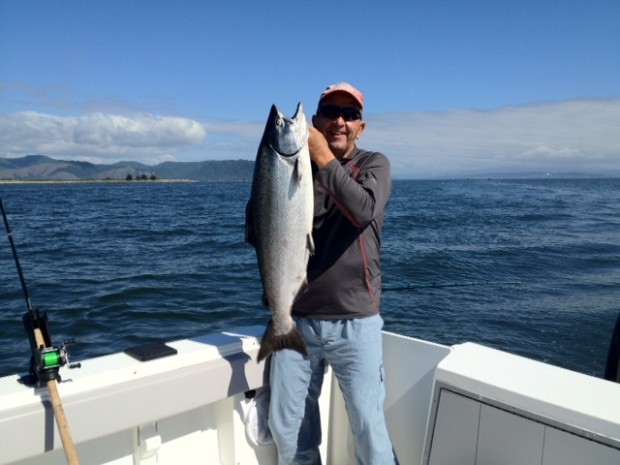
Another stock likely to impede crafting fishing seasons will be the mid-Hood Canal chinook where just 39 chinook forecasted in 2020 compared to 286 in 2019.
OPTION ONE
Total Allowable Catch is 60,000 chinook and 35,000 hatchery-marked coho (32,000 and 172,200 in 2019 and 58,600 and 37,800 in 2018). Breakdown of sport catch quota is 30,000 chinook and 29,400 hatchery-marked coho.
(Other notes – No Area 4B add-on fishery. Buoy 10 fishery opens Aug. 1 with an expected kept catch of 13,000 hatchery-marked coho in August and September. Overall chinook and/or coho TACs may need to be reduced or fisheries adjusted to meet NMFS ESA guidance, FMP requirements, upon conclusion of negotiations in the North of Falcon forum, or upon receipt of preseason catch and abundance expectations for Canadian and Alaskan fisheries.)
NEAH BAY: 6,400 chinook and 3,060 hatchery-marked coho.Open daily from June 14 through Sept. 30 or could close sooner if quota is achieved. During June 14-28, one salmon daily limit, except release coho. Beginning June 29, all salmon, except no chum beginning Aug. 1 with a two salmon daily limit. Beginning Aug. 1, chinook non-retention east of the Bonilla-Tatoosh line.
LA PUSH: 1,250 chinook and 760 hatchery-marked coho.Open daily from June 14 through Sept. 30 or could close sooner if quota is achieved. During June 14-28, one salmon daily limit, except release coho. Beginning June 29, all salmon, except no chum beginning Aug. 1 with a two salmon daily limit and no more than one may be a chinook. Terminal fishery Oct. 1-14 with 150. One salmon daily limit.
WESTPORT: 14,200 chinook and 10,880 hatchery-marked coho. Open from June 14 through Sept. 30 or could close sooner if quota is achieved. Open daily during June 14-28, one salmon daily limit, except release coho, chinook minimum size is 22 inches. Beginning June 29, open Sundays through Thursdays only, all salmon with a two salmon daily limit and no more than one may be a chinook, coho minimum size is 16 inches and chinook is 22 inches.
ILWACO: 8,000 chinook and 14,700 hatchery-marked coho or could close sooner if quota is achieved.Open daily from June 14-28 with a one salmon daily limit, release all coho and a chinook minimum size of 22 inches. Open daily beginning June 29, all salmon with a two salmon daily limit and no more than one may be a chinook, coho minimum size is 16 inches and chinook is 22 inches.
OPTION TWO
Total Allowable Catch is 45,000 chinook and 25,000 hatchery-marked coho (27,500 and 159,600 in 2019 and 30,000 and 14,700 in 2018). Breakdown of sport catch quota is 22,125 chinook and 22,500 hatchery-marked coho.
(Other notes – No Area 4B add-on fishery. Buoy 10 fishery opens Aug. 1 with an expected kept catch of 15,000 hatchery-marked coho in August and September. Overall chinook and/or coho TACs may need to be reduced or fisheries adjusted to meet NMFS ESA guidance, FMP requirements, upon conclusion of negotiations in the North of Falcon forum, or upon receipt of preseason catch and abundance expectations for Canadian and Alaskan fisheries.)
NEAH BAY: 4,700 chinook and 2,340 hatchery-marked coho.Open daily from June 27 through Sept. 13 or could close sooner if quota is achieved. All salmon, except no chum beginning Aug. 1 with a two salmon daily limit. Beginning Aug. 1, chinook non-retention east of the Bonilla-Tatoosh line.
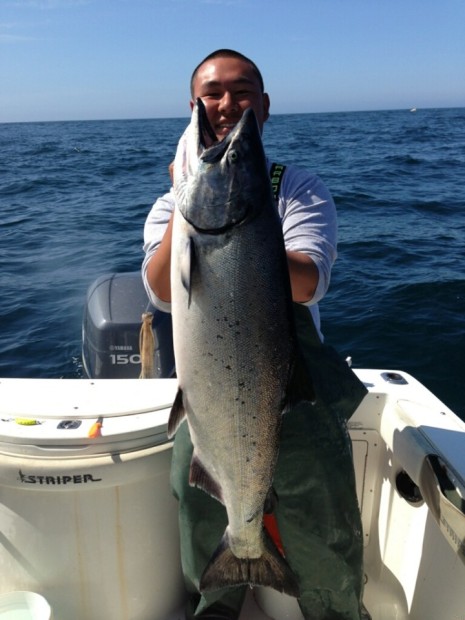
LA PUSH: 1,100 chinook and 580 hatchery-marked coho. Open daily from June 27 through Sept. 13 or could close sooner if quota is achieved. All salmon, except no chum beginning Aug. 1 with a two salmon daily limit.
WESTPORT: 10,500 chinook and 8,330 hatchery-marked coho. Open Sundays through Thursdays from June 28 through Sept. 13 or could close sooner if quota is achieved. All salmon with a two salmon daily and no more than one may be a chinook, coho minimum size is 16 inches and chinook minimum size is 22 inches.
ILWACO: 5,800 chinook and 11,250 hatchery-marked coho or could close sooner if quota is achieved.Open Thursdays to Sundays only from June 28 through Sept. 13 or could close sooner if quota is achieved. Two salmon daily and no more than one may be a chinook, coho minimum size is 16 inches and chinook minimum size is 22 inches.
OPTION THREE
All fisheries off the entire coast will be closed (22,500 and 94,400 in 2019 and all fisheries off the entire coast closed in 2018)
(Other notes – Buoy 10 fishery opens Aug. 1 with an expected kept catch of 17,000 hatchery-marked coho in August and September.)
Due to the COVID-19/coronavirus situation, the WDFW announced that it will shift public meetings to online or phone-based formats, including the first upcoming North of Falcon meeting today (March 16).
More information about tuning in to the North of Falcon season-setting meeting scheduled for 9:30 a.m., and future North of Falcon meetings, will be available and regularly updated at https://wdfw.wa.gov/fishing/management/north-falcon.
Updated information on WDFW commission meetings, advisory group meetings, and other public meetings is available at https://wdfw.wa.gov/get-involved/calendar. Here you can find updates, including a possible extension of how long these restrictions may last.
The Pacific Fishery Management Council will adopt final salmon seasons at the Hilton Vancouver, 301 West 6th Street in Vancouver, WA, on April 5-11. For specific meeting agendas and times, go to https://wdfw.wa.gov/fishing/management/north-falcon.

